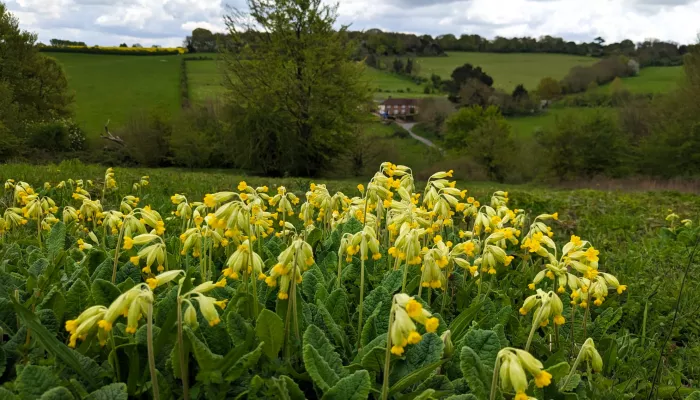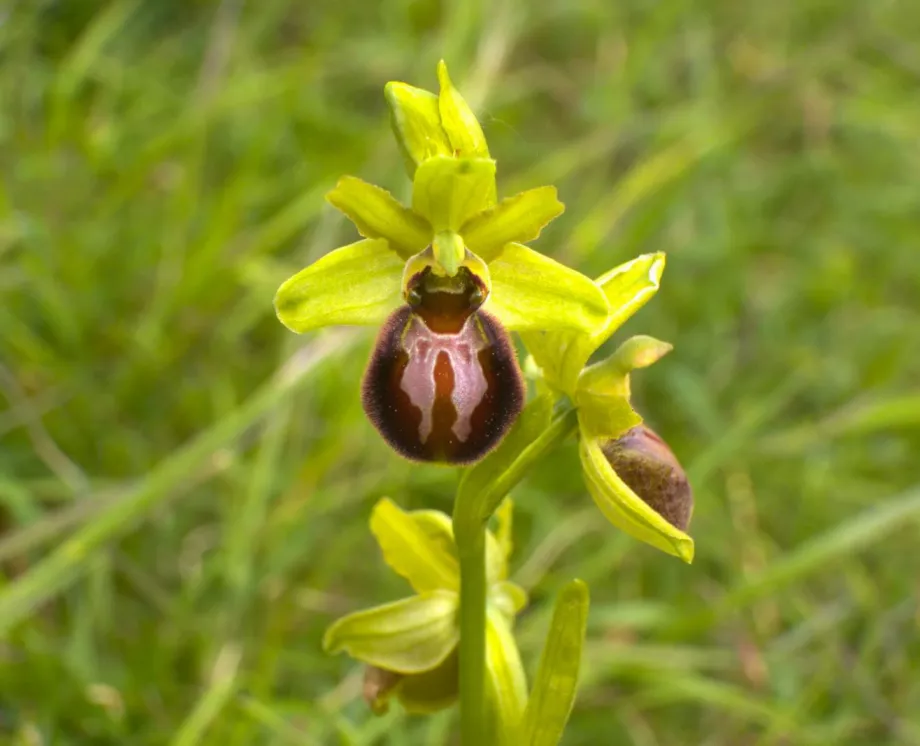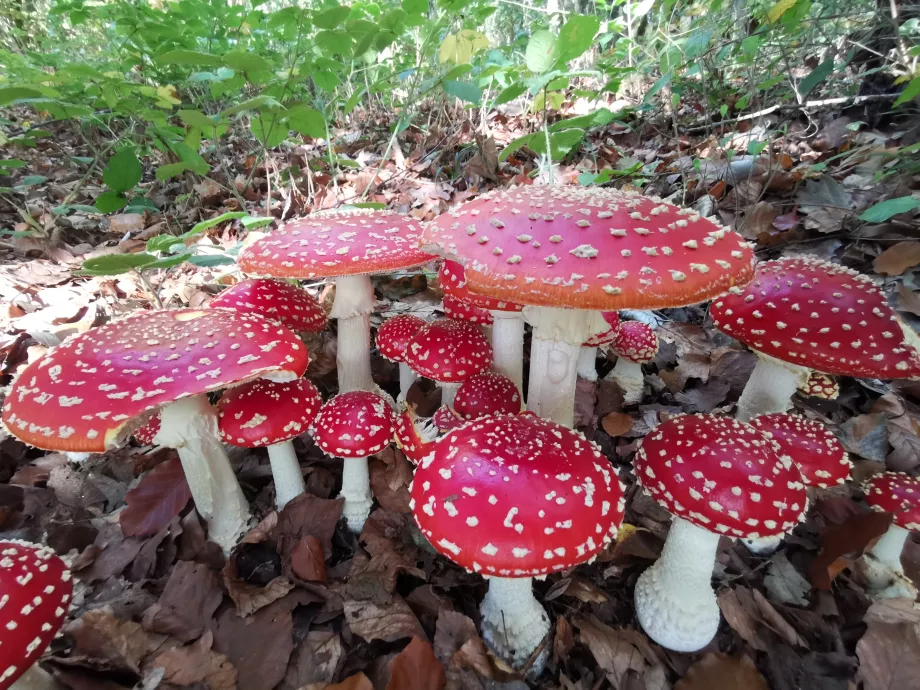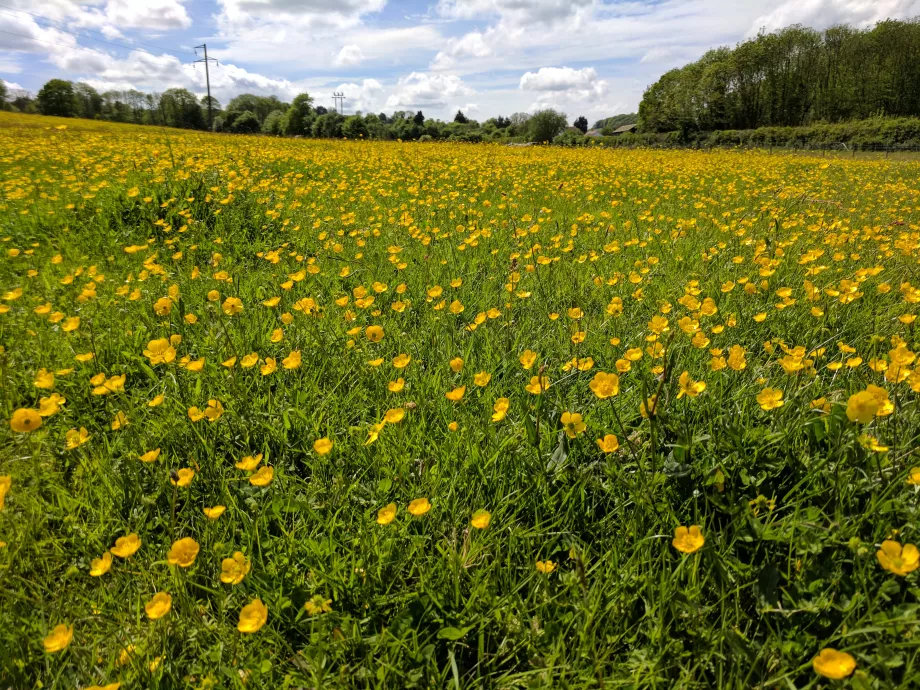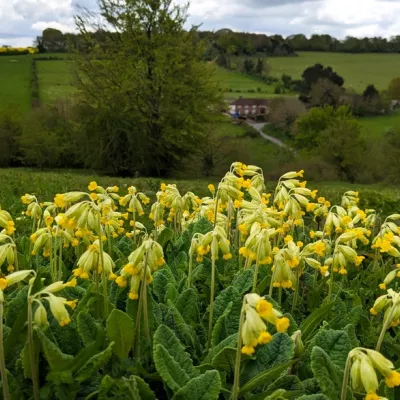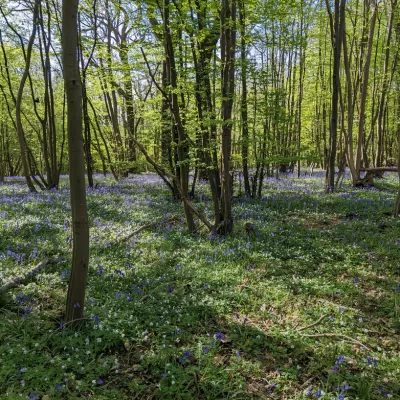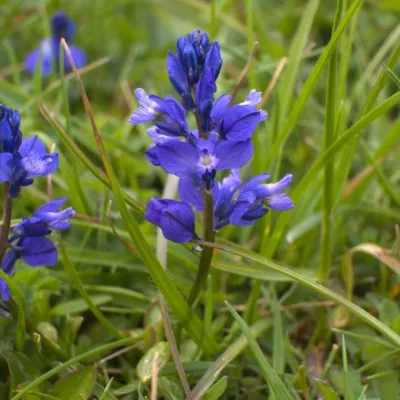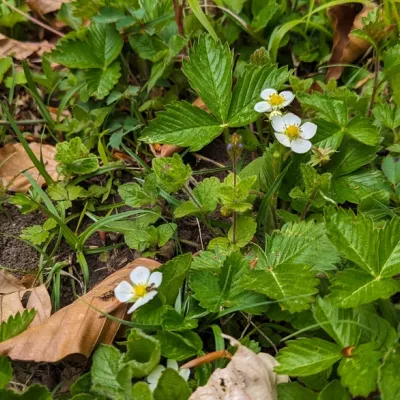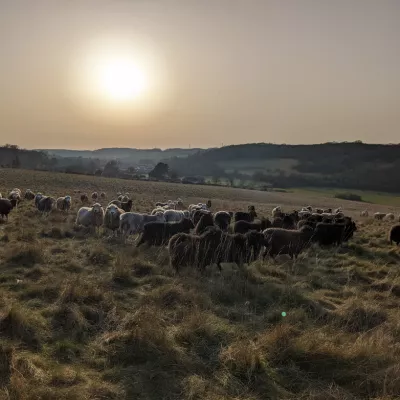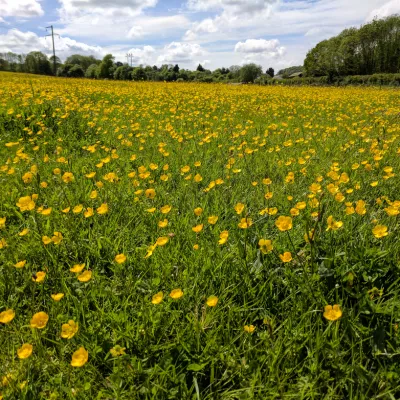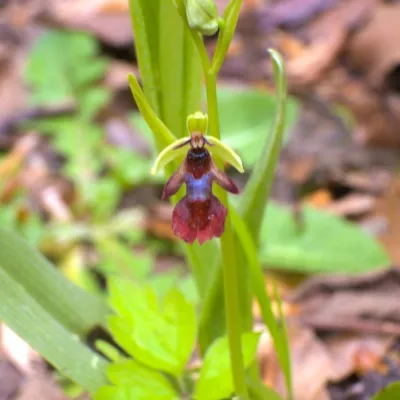The Main Banks
The main banks at Queendown Warren are managed to maintain structural diversity. Open chalk grassland goes into young scrub edge and then transitions into woodland. This diversity of habitat is key for so many species. Silver spotted skippers love the short swords while the marbled white and meadow brown butterflies prefer the longer tusks. We’ve been lucky enough to record nesting birds such as nightingales (last heard April 2023) and turtle doves just last year, so the team are working hard to support a regular population of both these rare bird species.
The Extensions
Bought back in 2009 and 2011, the extensions on the other side of the valley are semi-improved pastureland. The area was separated; some was arable, ploughed and fertilised each year whilst some was pastoral, having had a light sprinkling of fertiliser in the past and ploughed once during the second world war.
In the last decade, these fields have been put to grass and grazed to try and strip them of nutrients. So far, there has been some success as we have seen green-winged orchid, birds foot trefoil and knapweed but the biodiversity has been slow to pick up.
Rob’s plans for the future will be to start another experiment which will see pigs used on the site to break up the sword and create bare ground where new seeds will be able to germinate and encourage disturbed ground plant species whose seeds are favoured by turtle doves. This experiment will be done alongside an area that is harrowed. Harrowing is a light break-up of the soil with a small tractor which is commonly done to achieve the same result. We should be able to see the difference between the pigs turning the soil and the tractor turning the soil in a few years.
We’ll also be splitting up the bare areas by broadcasting some wildflower seed into some and leaving some to nature. The aim is to see floral diversity within the next decade as opposed to the hundreds of years it would take if everything was left to colonise naturally.
Pond work
Historically, there was also a small pond which dried up and failed, so Rob is looking to reinstate it and add another pond. This will give Queendown Warren some wetland habitat back on the site for migratory dragonflies who pass through the reserve to stop off and breed. Water is also quite good for turtle doves who like to have a source of water where they breed.
Hedgerows
Lastly, Queendown Warren is having a hedgerow makeover. The last record of a brown hairstreak butterfly on the site was 1948 and the white letter hairstreak was found on the reserve in July 1970 with another spotted elsewhere on the valley in 1977 (according to The Butterflies and Moths of Kent - by Chalmers-Hunt). Rob found a colony at Bredhurst woods, just a mile or so from the reserve, a few years ago so, hopefully they will colonise Queendown from there. But to bring these species back – we need the right kind of hedgerows. Rob has already started planting hedgerows with blackthorn for the brown hairstreak and diseases resistant elm for the white letter hairstreak.
There is a short stretch of hedge where yet another experiment is underway – this time, with hedgerow propagation techniques. Split into quarters,
- one section is left on its own for natural regeneration,
- one section is planted up in the common way hedgerows are planted (with young whips),
- one section will consist of fruiting material that is run through a chipper and
- the final section is cut material stacked loosely.
The question is: can we make biodiverse hedgerows that are more resilient because they self-seed? Rob’s experiment will test which method, if any, can beat the traditional, more carbon hungry way of planting tree whips.
Having chipped material on the third quarter of the experiment will see if the seeds fall naturally onto the warm, nutrient rich mulch and develop a hedgerow. In the last quarter of the experiment, if the seeds fall naturally from the loosely placed material onto the ground and germinate, the thorny material will – in theory – provide protection from grazing animals. This method will save plenty of time having to chip the material first place and in the meantime, long grass will flop over the piles to create tents which make great habitats for small mammals such as mice and voles. Double win!
Will we be able to establish a hedgerow from local species, as fast as possible using up less carbon to do it? Will the species we’ve planted benefit from being germinated on site and developing that relationship with the soil mycorrhiza instead of being grown away from the site and imported? This experiment could provide some key answers that will lay the groundwork – excuse the pun – for future hedgerow starting techniques.
Your turn to visit
As you can see, Queendown Warren is not just any site. It’s home to a diverse habitat that supports many species and can – in the future – support so much more. Thanks to the hard work of Rob and the team at Kent Wildlife Trust, including the dedicated volunteers who come out and help, this work is already underway and making massive improvements on the landscape. All of this is there for you to see. Queendown Warren is open to the public and has a vast number of footpaths that connect the habitats and allow you to see everything that is on offer. Find out more about Queendown Warren and how to get there on our website.


